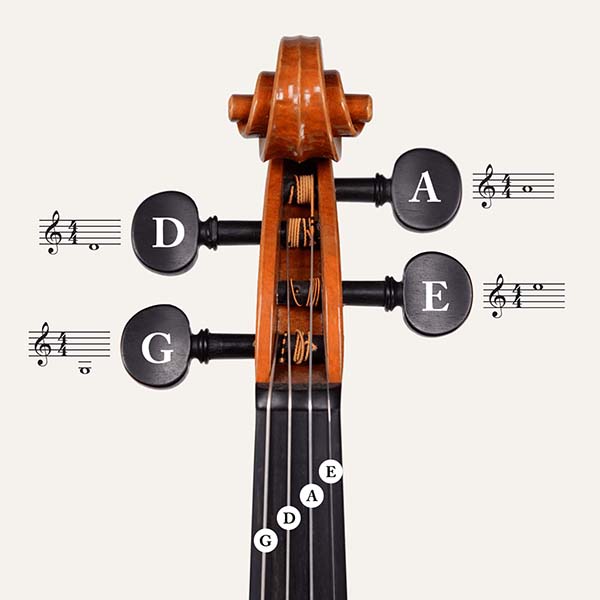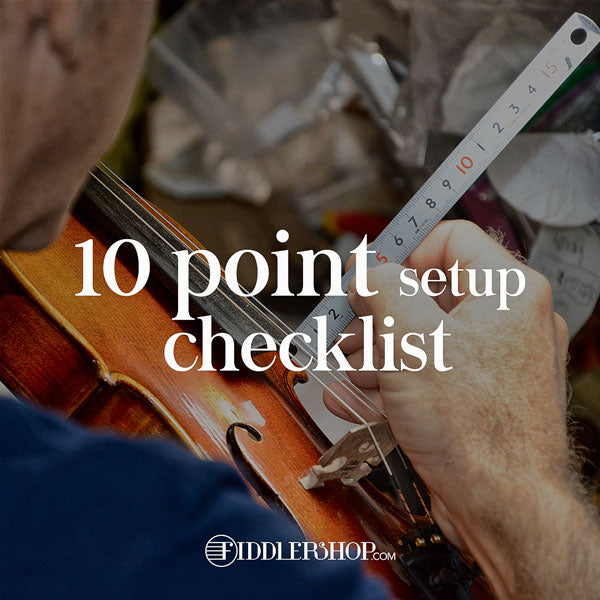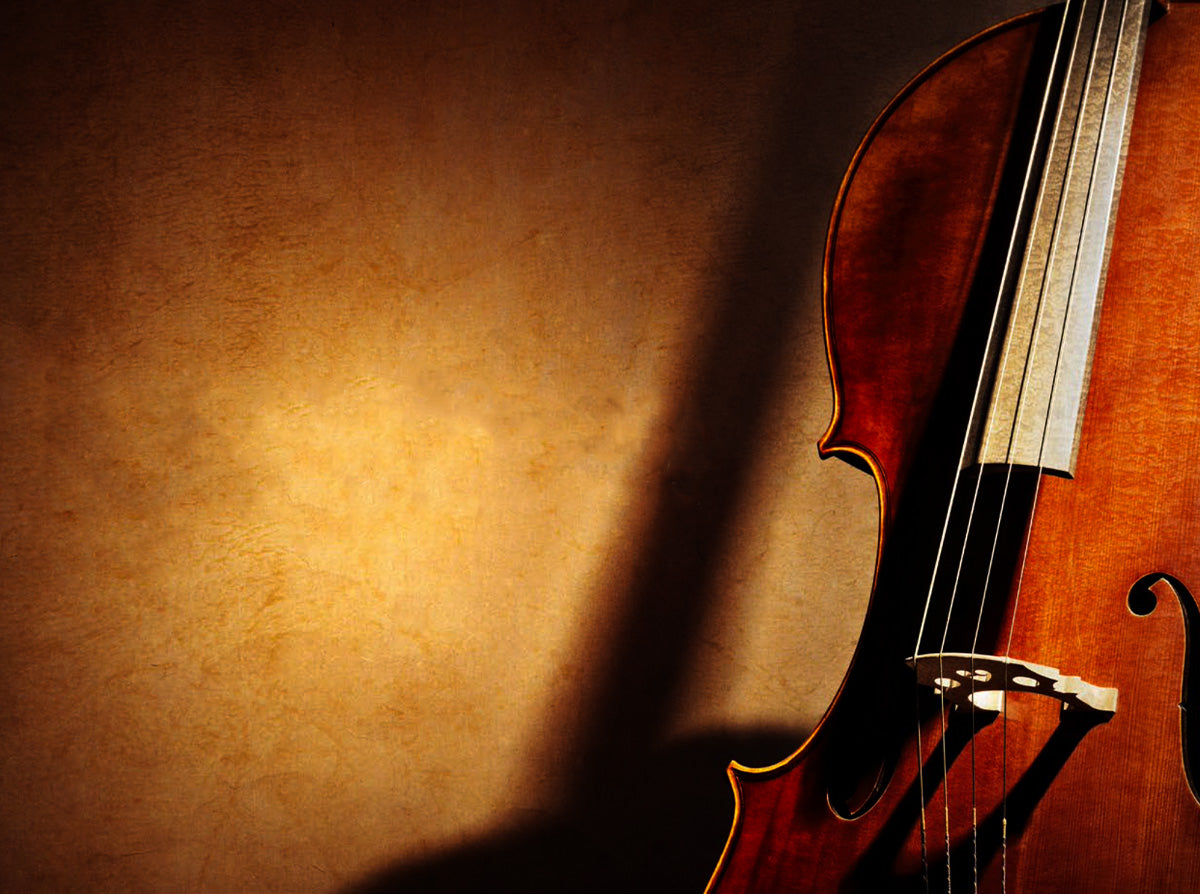These are the 10 points that Fiddlerman and his luthiers focus on:
1. String height
The height of the strings is extremely important when it comes to playability and sound. The nut, fingerboard, and bridge all affect the string height and have to be crafted with precision.
2. Bridge seating
One of the more time consuming processes in setting up a string instrument- shaping and fitting the feet of the bridge by hand to perfectly match the curvature of the top. Every top has a different curvature so you can’t buy a pre-fitted bridge. A good bridge determines the tone, projection, and overall resonance of the instrument.
3. Fingerboard planing/sanding
The most time consuming part of the setup! Any indentations and/or depressions will cause unwanted spaces or buzzing from the strings as they are pressed. A specific convex shape of the fingerboard, known as scoop, is essential for proper string resonance.

4. E string parchment
Fiddlershop always puts parchments, thin pieces of dried hide leather, on the bridges to avoid the E string from cutting into it. It’s transparent and hardly noticeable. Also known as a Bridge Protector.
5. String grooves
The grooves for the strings on the nut and bridge must be evenly spaced and the depths must be cut correctly for the strings resonance.
6. Peg fitting
One of the most important features are the tuning pegs. They must be precisely shaped and shaven to match the holes of the peg box.

7. Fine tuners/tailpiece/end button
Fiddlershop will fit/adjust, install, and test the tailpiece, fine tuners and end button for functionality, length and strength.
8. Sound post
The sound post is placed inside the instrument, right under the location of the bridge foot. It must be cut at the perfect angle to match the curvature of the top and bottom of the violin. A good sound post adjustment can make the instrument easier to play, more well-rounded, and project more. The resonance is severely compromised if the sound post is not set to the correct position, length and angle.

9. Structural inspection
Coming to the end of the path is the final inspection and testing stage. Fiddlershop has developed its own bridge and string-bracing out of cardboard, to allow the violin to arrive at your doorstep in tune, or close to it. Also with the sound post in the same location as when it left our workshop.
10. Final cleaning
We use our custom polish and a cleaner to make sure your instrument will look its best!






7 comments
Fiddlershop
Hi Yvonne!
Yes, our violins tune easily and professionals tune the way you are describing. It’s a hard technique to learn though. One must be able to turn with the left hand while sufficiently pressing in at the same time. Even though the professional can do it, it takes time to learn.
You can install so called geared pegs if you want a super easy solution. We sell both the Wittner Finetune Geared Violin Peg Set and the Perfection Planetary Geared Violin Peg Set.
Hi Yvonne!
Yes, our violins tune easily and professionals tune the way you are describing. It’s a hard technique to learn though. One must be able to turn with the left hand while sufficiently pressing in at the same time. Even though the professional can do it, it takes time to learn.
You can install so called geared pegs if you want a super easy solution. We sell both the Wittner Finetune Geared Violin Peg Set and the Perfection Planetary Geared Violin Peg Set.
Yvonne Rose
Hi, do your violins tune easily? I have seen violinists tune with the left hand while holding the violin under the chin. Not with my violin – I have to grip my instrument with one hand & tune with the other, and re-tune frequently. It’s frustrating when practicing and double frustrating during performance. Please email / comment. Thank you.
Hi, do your violins tune easily? I have seen violinists tune with the left hand while holding the violin under the chin. Not with my violin – I have to grip my instrument with one hand & tune with the other, and re-tune frequently. It’s frustrating when practicing and double frustrating during performance. Please email / comment. Thank you.
Bill Rigert
Hi Fiddlershop,
Being a guitar and mandolin player, I bought the Master Outfit 1/31/2019 to give the fiddle a try. It has been a great learning year and the violin is really starting to show its voice! SN: 20190205-08, Checklist signed by: ‘big triangle’ shaped signature.
Over the past year I diligently and methodically practiced…..it was especially difficult with string crossings, vibrato technique, and the D string always seemed a little dead even though it’s set up with Pirastro Evah Pirazzi Gold strings.
So I looked into the setup, it seems your Checklist failed. Net string clearance at GDAE mm (inch) is = 5.84 (.230") , 6.76 (.266") , 6.35 (.250"), 5.08 (.200"), These should’ve been about G= 4mm and E= 2.5mm FB clearance for steel strings!! Also, the bridge feet had been shaved down to slightly under 0.030" thickness which can’t be good because of the reduced mass at the contact with the soundboard.
So I swapped out the bridge from my daughter’s old Cremona 100 and as they say ‘viola’!! …my technique was transformed in a moment. Also, the D and A strings were found swapped (.020" A at D and .024" D at A)….hence creating an imbalance with the reversed string thicknesses.
Currently I have an order in for a couple new precut bridges which I’ll fit myself, I was practicing all last year with a sense of challenge and persistence, and it is paying off, I look forward to continuing this fiddle journey.
But please, if you check your checklist, make sure it’s really checked, because I believe your checker’s checking was a bit checkered in this instance.
Shalom!
Hi Fiddlershop,
Being a guitar and mandolin player, I bought the Master Outfit 1/31/2019 to give the fiddle a try. It has been a great learning year and the violin is really starting to show its voice! SN: 20190205-08, Checklist signed by: ‘big triangle’ shaped signature.
Over the past year I diligently and methodically practiced…..it was especially difficult with string crossings, vibrato technique, and the D string always seemed a little dead even though it’s set up with Pirastro Evah Pirazzi Gold strings.
So I looked into the setup, it seems your Checklist failed. Net string clearance at GDAE mm (inch) is = 5.84 (.230") , 6.76 (.266") , 6.35 (.250"), 5.08 (.200"), These should’ve been about G= 4mm and E= 2.5mm FB clearance for steel strings!! Also, the bridge feet had been shaved down to slightly under 0.030" thickness which can’t be good because of the reduced mass at the contact with the soundboard.
So I swapped out the bridge from my daughter’s old Cremona 100 and as they say ‘viola’!! …my technique was transformed in a moment. Also, the D and A strings were found swapped (.020" A at D and .024" D at A)….hence creating an imbalance with the reversed string thicknesses.
Currently I have an order in for a couple new precut bridges which I’ll fit myself, I was practicing all last year with a sense of challenge and persistence, and it is paying off, I look forward to continuing this fiddle journey.
But please, if you check your checklist, make sure it’s really checked, because I believe your checker’s checking was a bit checkered in this instance.
Shalom!
Douglas McKay
Hello I have just started in learning on the cello. I do have a cello that I got off Amazon good entry but I need to change the pegs I find myself turning to munch
Hello I have just started in learning on the cello. I do have a cello that I got off Amazon good entry but I need to change the pegs I find myself turning to munch
Fiddlershop
Hi Farid!
Thanks for letting us know! Fiddlerman puts a lot of effort and pride in to his checklist and we are very happy that it’s up to par. If our customers are happy – we are happy! Thanks again!
Hi Farid!
Thanks for letting us know! Fiddlerman puts a lot of effort and pride in to his checklist and we are very happy that it’s up to par. If our customers are happy – we are happy! Thanks again!
Farid Hussain
This checklist covers pretty much everything, for the violin to arrive in optimal condition and ready to play-mine did!
This checklist covers pretty much everything, for the violin to arrive in optimal condition and ready to play-mine did!
Tom Bolt
Every violinist should be able to set his own sound post and tune his bridge, even cut a new one if necessary. Why? Too often to find a good luthier in your community may be an impossibility. I just had work done on my knock-off Steiner and the repairman knew not what he was doing. $130 down the drain for new nut, bridge, sound post and stings. Learn to do your own. I am capable and have done it but was lazy this time. Albeit, I have learned I am short on some aspects but that shall be cleared up.
Every violinist should be able to set his own sound post and tune his bridge, even cut a new one if necessary. Why? Too often to find a good luthier in your community may be an impossibility. I just had work done on my knock-off Steiner and the repairman knew not what he was doing. $130 down the drain for new nut, bridge, sound post and stings. Learn to do your own. I am capable and have done it but was lazy this time. Albeit, I have learned I am short on some aspects but that shall be cleared up.